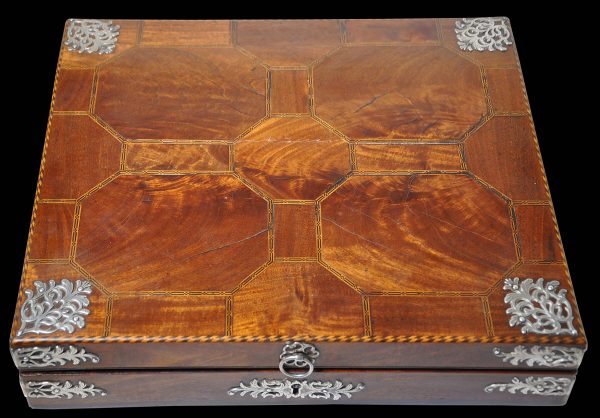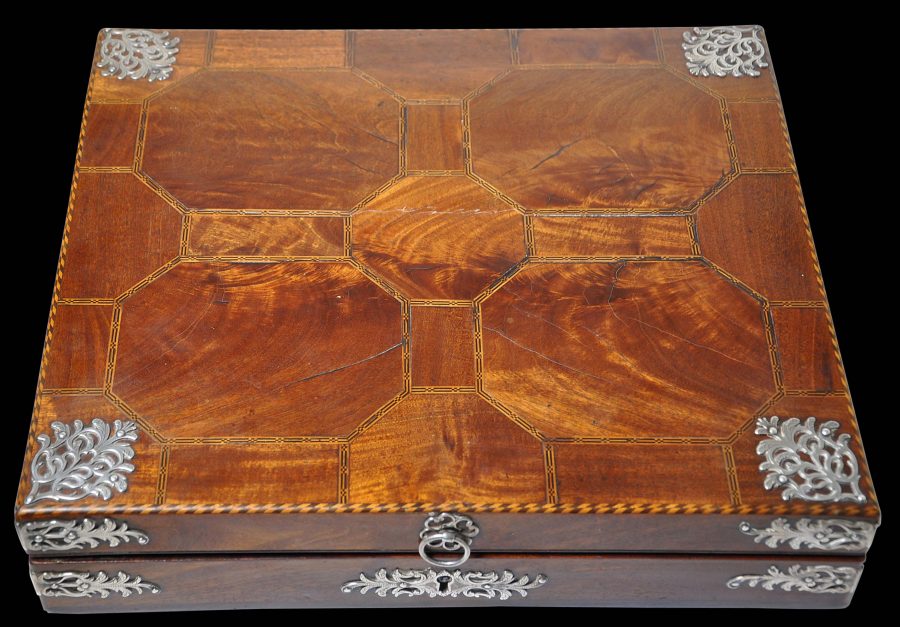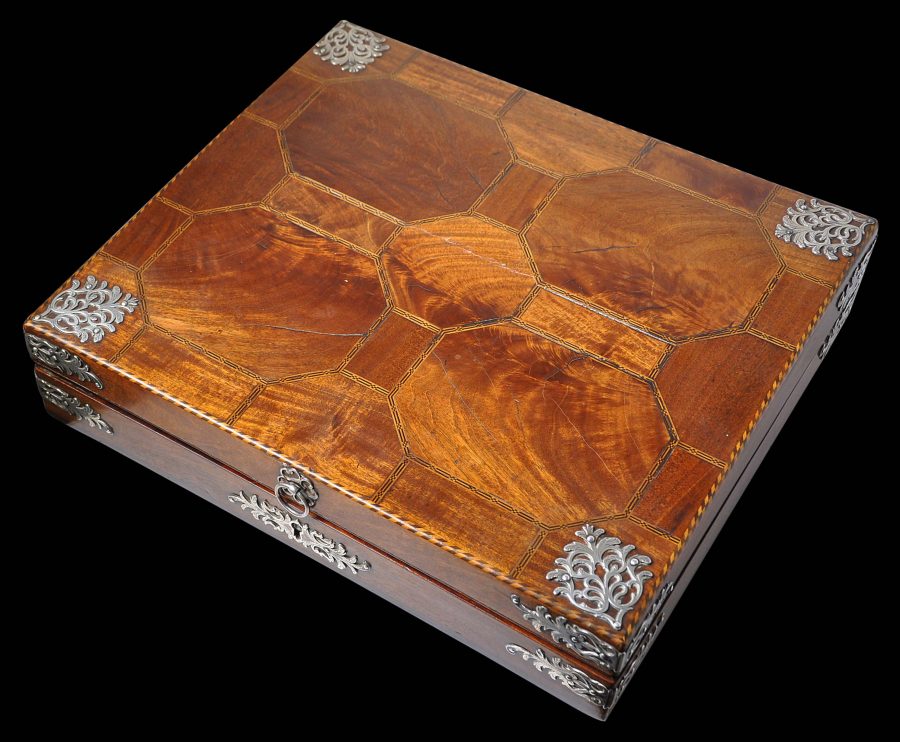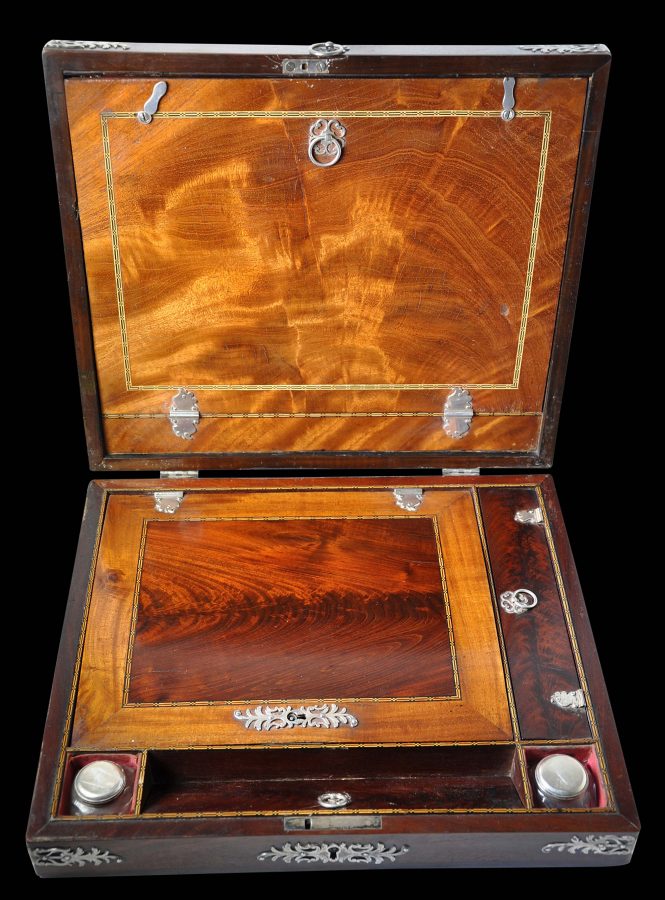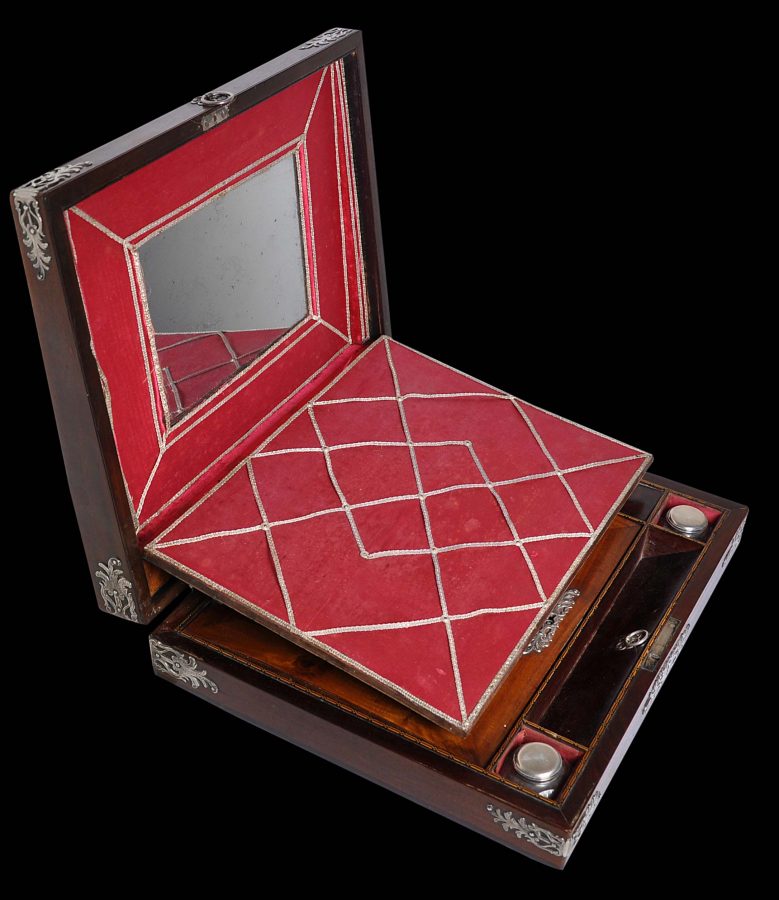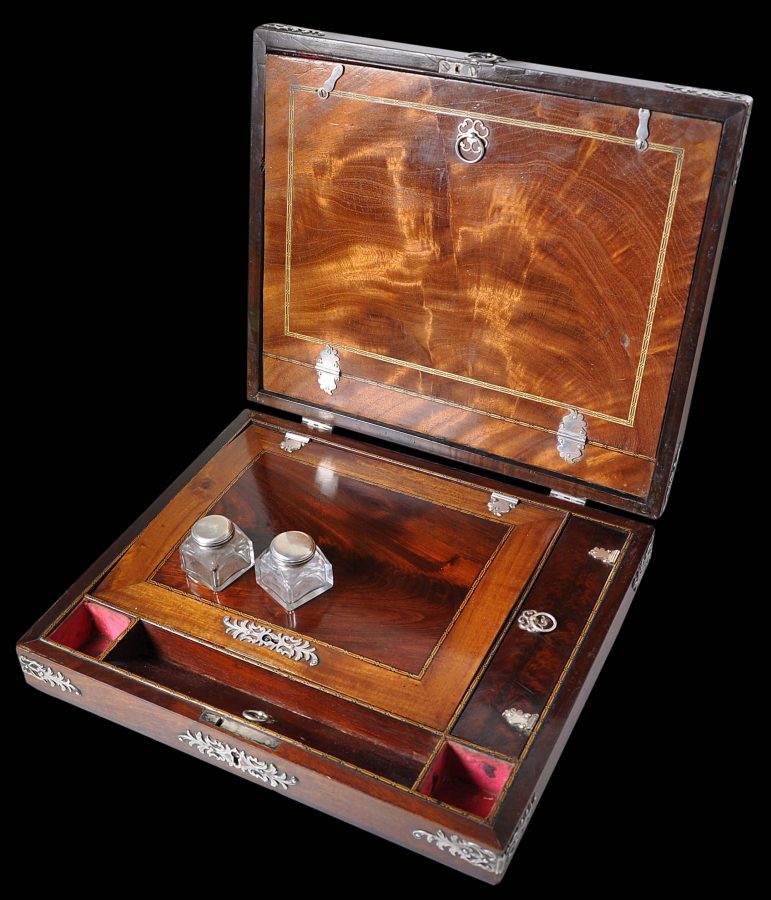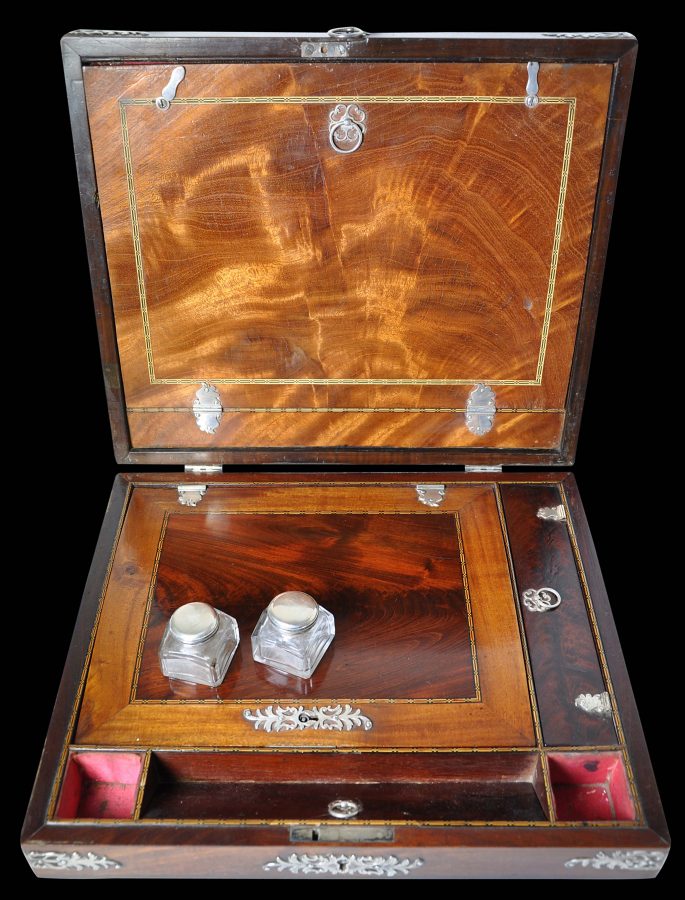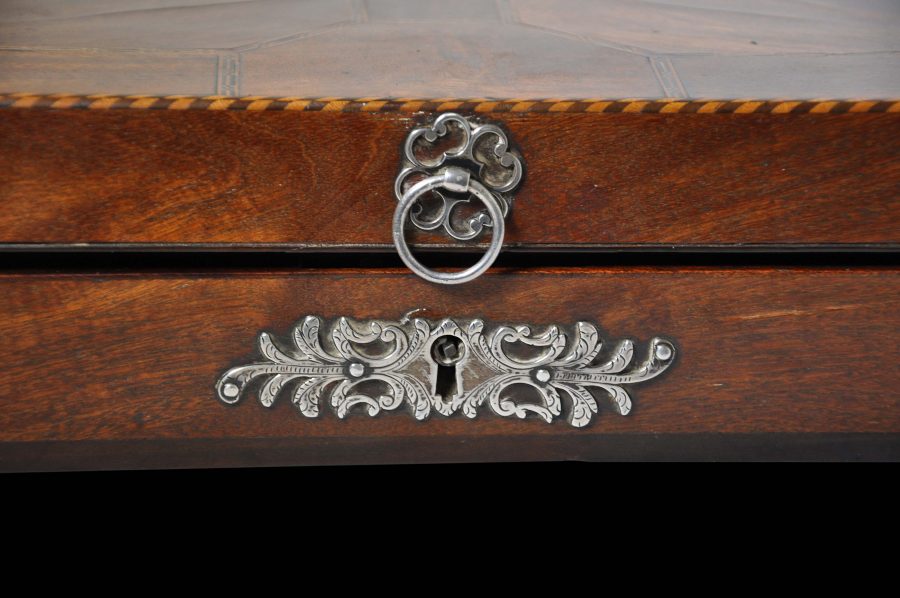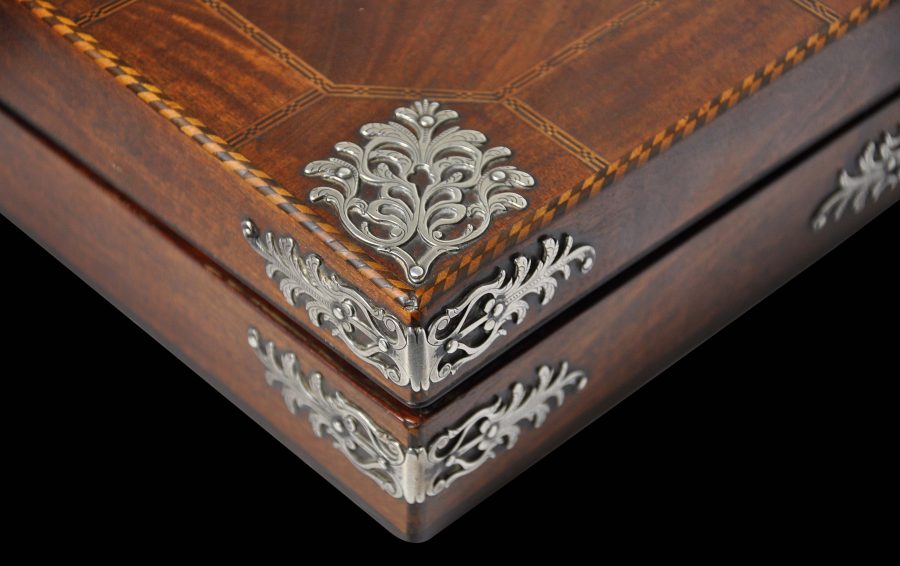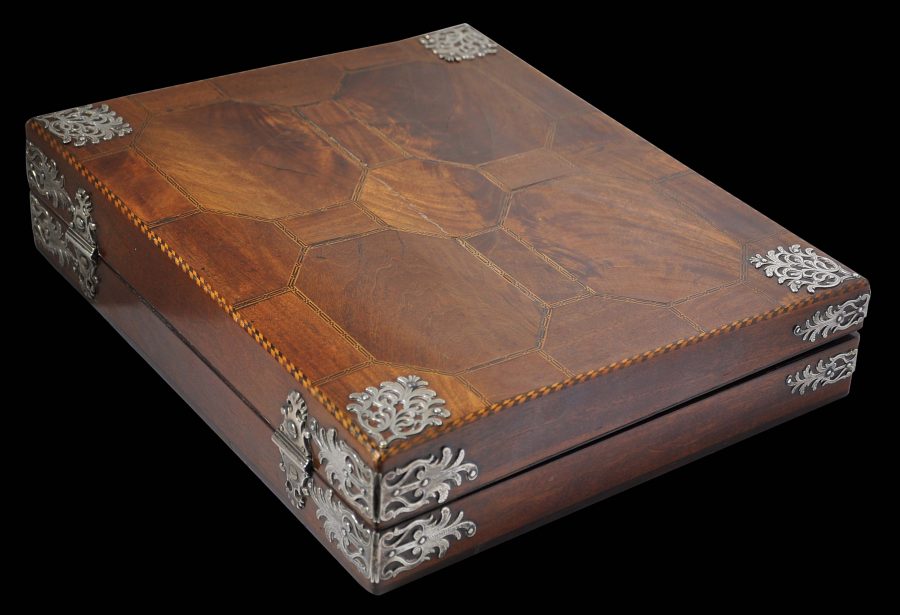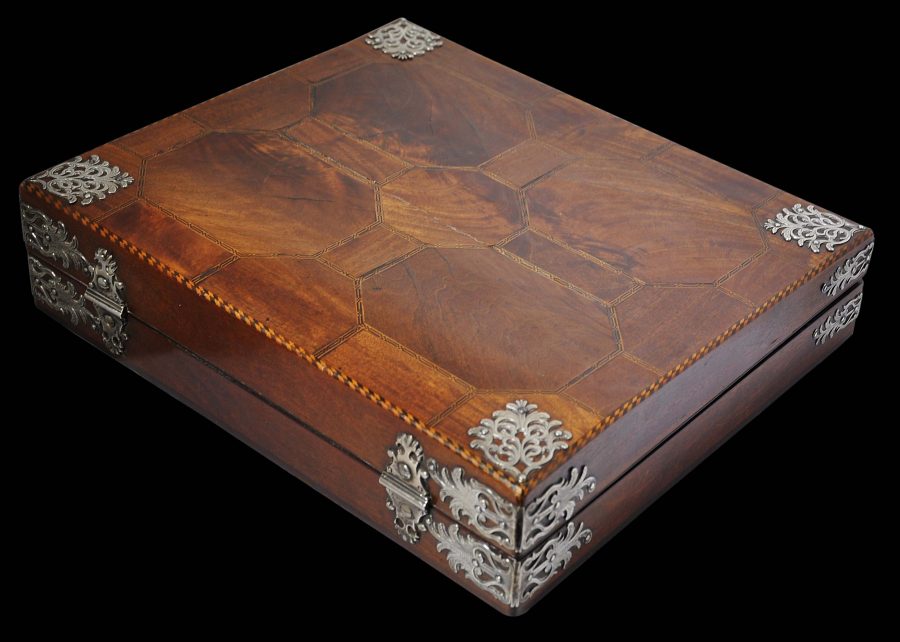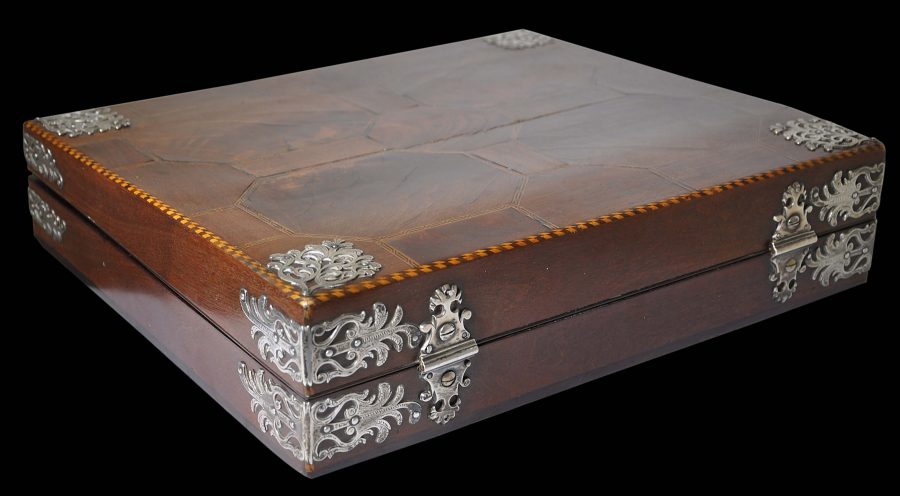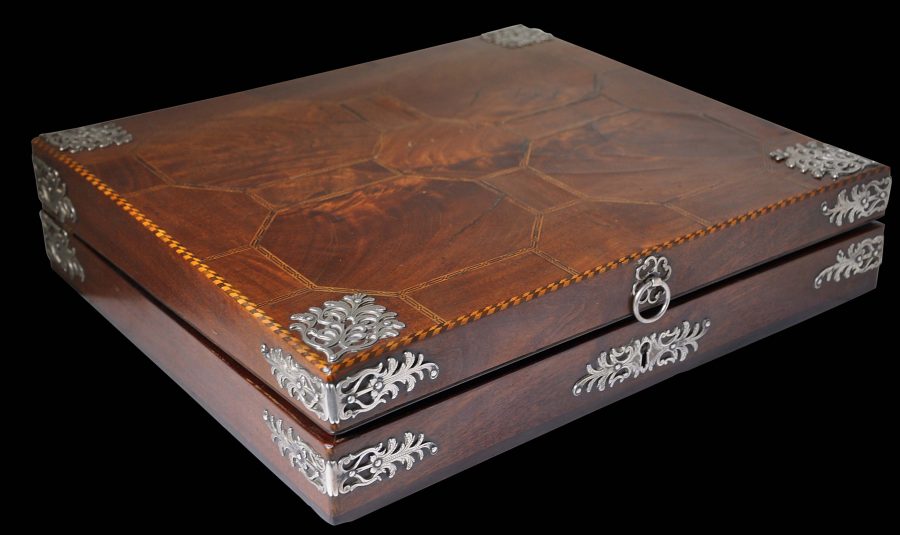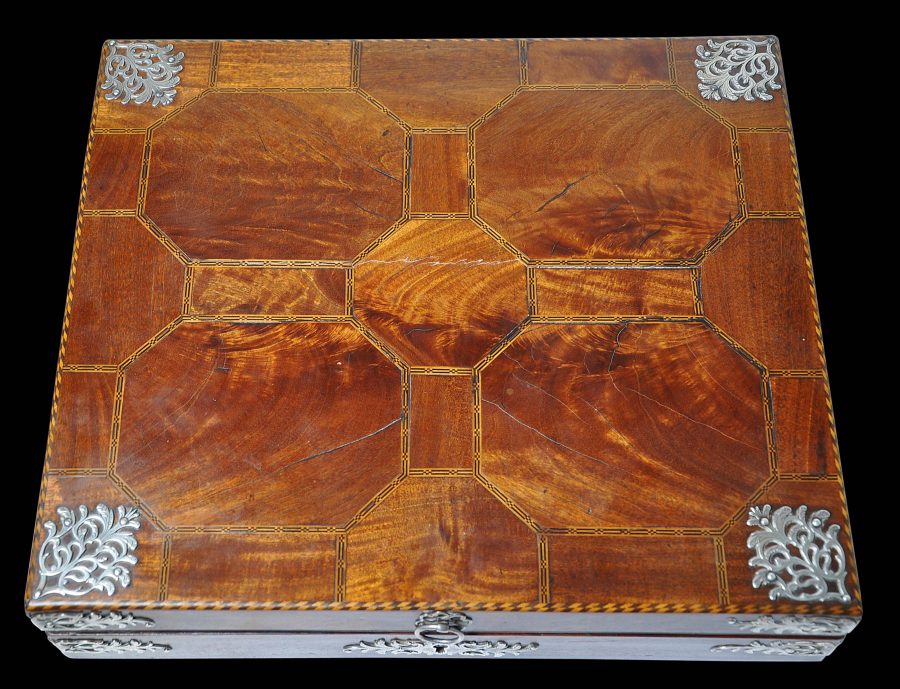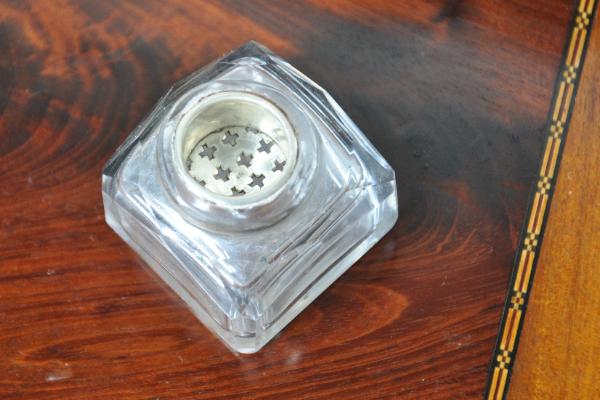This extremely fine writing box of rectangular form is decorated with veneers in geometric patterns and bordered by exceptionally fine marquetry work. The box has applied pierced and engraved silver spandrels at each corner and protective brackets, and silver hinges and key escutcheon.
The interior has two main compartments. The lower compartment is decorated with particularly lustrous, glowing wood bordered by more fine marquetry work. Lidded compartments have silver ring pulls and hinges. A large, hinged lid is fitted with a lock and silver key escutcheon and this lifts to reveal a storage area for writing paper.
Other compartments hold a glass inkwell with a silver cap and a sander (to hold sand used for drying ink) which has silver mounts.
The top compartment is mirrored and lined with red-pink silk and metallic ribbon.
The wood appears to be a mixture of satinwood, mahogany and perhaps rosewood. Satinwood and rosewood are indigenous to Sri Lanka and South India. Mahogany is indigenous to central America and the Caribbean. But it was available on the Coromondel Coast by the early 19th century and almost certainly before. Jaffer (2001, p. 77) cites an advertisement for an auction in Madras in 1810 at which local auctioneers Balfour & Hogg had for sale ‘Thirteen large logs of mahogany, lately imported. The Mahogany is from St Domingo, and has remarkable fine grain, admirably calculated for elegant Furniture, it will be sold one log in a lot, for the convenience of Purchasers’.
The silver mounts used in this box are not marked and so it is most unlikely that they were produced in England where they would have been hallmarked, or even elsewhere in Europe. But they are pierced and engraved in a manner suggestive of 17th and 18th century South Indian colonial work. Many boxes of wood and tortoiseshell from India and Sri Lanka and of the period have silver mounts engraved with similar foliage and floral scrolling. Jackson & Jaffer (2004, p. 36) illustrate a tortoiseshell casket from sixteenth or seventeenth century India with silver mounts that are similarly engraved. Other examples are illustrated in Tchakaloff et al (1987, p.98), and Jordan et al (1996).
Senior officials of and merchants in the service of the Dutch East India Company (VOC) were required to routinely send written communications about trade, local political developments, culture and any other events or observations deemed potentially useful for the Company’s interests. And usually everything had to be copied three or four times. (Veenendaal, 1985, p. 85). Accordingly, portable writing cabinets and boxes were much in demand in eighteenth century Batavia, India and Sri Lanka. This example appears to be one such box. Its precise origins are not clear. India’s Coromandel Coast seems most likely but Goa, Sri Lanka and Batavia are possibilities too. In any event, this writing box is one of the finest examples we have encountered.
The box is in excellent condition. There are no losses to the silver or the wood inlay work. Nor are there obvious repairs. One internal lid has a slight bow from age-related wood shrinkage but otherwise this is an exceptional piece.
References
Coomaraswamy, A.K., Mediaeval Sinhalese Art, Pantheon Books, 1956
Jackson, A. & A. Jaffer, Encounters: The Meeting of Asia and Europe 1500-1800, V&A Publications, 2004.
Jaffer, A., Furniture from British India and Ceylon: A Catalogue of the Collections in the Victoria and Albert Museum and the Peabody Essex Museum, Timeless Books, 2001.
Jaffer, A., Luxury Goods from India: The Art of the Indian Cabinet Maker, V&A Publications, 2002.
Jordan, A. et al, The Heritage of Rauluchantim, Museu de Sao Roque, 1996.
Potter, T., Wood: Identification and Use, Guild of Master Craftsman Publications, 2004.
de Silva, P.H.D.H., A Catalogue of Antiquities and Other Cultural Objects from Sri Lanka (Ceylon) Abroad, National Museums of Sri Lanka, 1975.
Tchakaloff, T.N. et al, La Route des Indes – Les Indes et L’Europe: Echanges Artistiques et Heritage Commun 1650-1850, Somagy Editions d’Art, 1998.
Veenendaal, J., Furniture from Indonesia, Sri Lanka and India During the Dutch Period, Foundation Volkenkundig Museum Nusantara, 1985.
Voskuil-Groenewegen, S.M. et al, Zilver uit de tijd van de Verenigde Oostindische Compagnie, Waanders Uitgevers, 1998.


